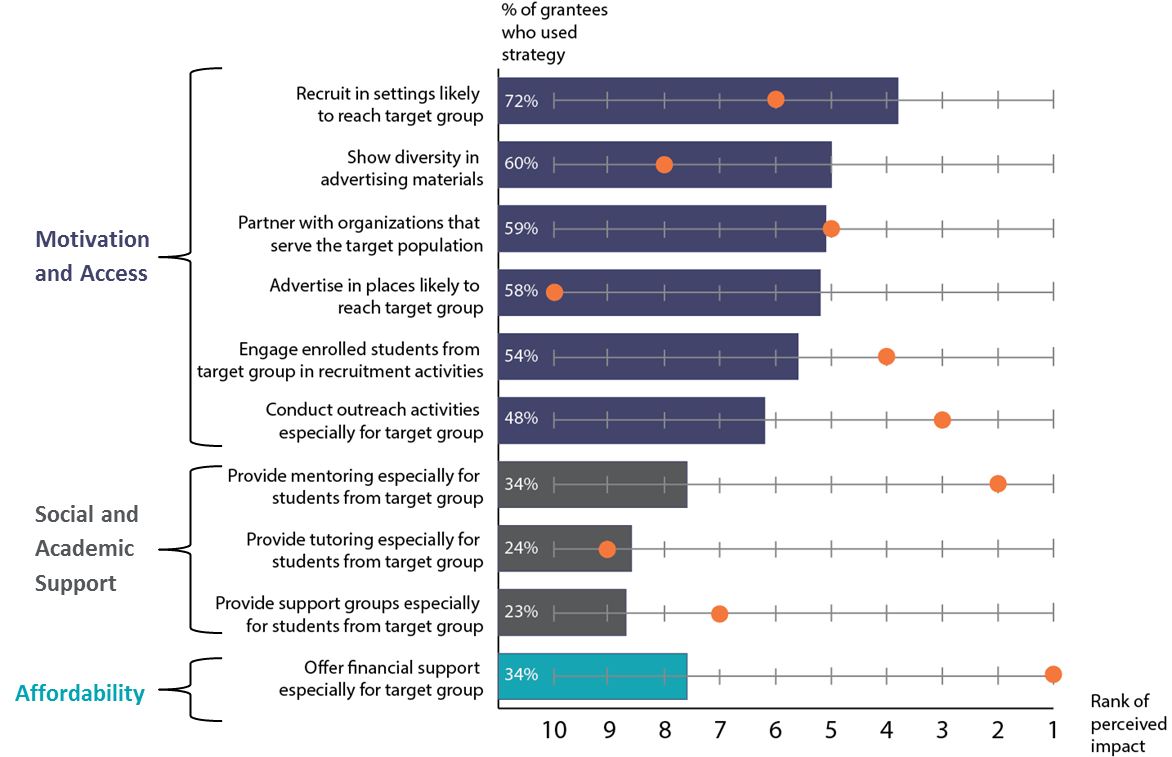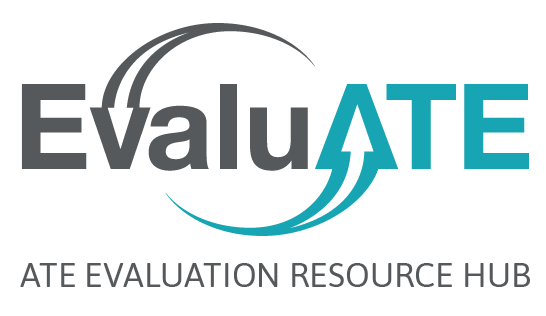
Note: These questions will be asked again in the 2022 ATE Survey.
One of the objectives NSF has for its funded programs is to broaden participation in STEM. Broadening participation entails increasing the number of underrepresented minorities (URMs) in STEM programs of study, employment, and research. NSF defines URMs as “women, persons with disabilities, and three racial/ethnic groups—blacks, Hispanics, and American Indians” (NSF, 2013, p. 2). Lori Wingate and I recently wrote a paper examining the strategies used by ATE grantees for recruiting and retaining URM students and how effective they perceive these strategies to be. Each year, the annual ATE survey collects demographic data on student enrollment in ATE programming. We noticed that when compared with national data, ATE programs were doing well when it came to enrolling URM students, especially African-American students. So we decided to investigate what strategies ATE programs were using to recruit and to retain these students. This study was based on data from the 2013 survey of ATE principal investigators.
Our survey asked about 10 different strategies. The strategies were organized into a framework consisting of three parts: motivation and access, social and academic support and affordability[1] as presented in the figure below. The percentages and associated bars represent the proportion of grantees who reported using a particular strategy. The gray lines and orange dots represent the rank of perceived impact, where 1 is the highest reported impact and 10 is the lowest.

Overall, we found that ATE projects and centers were using strategies related to motivation and access more than those related to either social/academic support or affordability. These types of strategies are also more focused on recruiting students as opposed to retaining them. It was interesting that there was a greater emphasis on recruitment strategies, particularly because many of these strategies ranked low in terms of perceived impact. In fact, when we compared the overall perceptions of effectiveness to the actual use of particular strategies, we found that many of the strategies perceived to have the highest impact on improving the participation of URM students in ATE programs were being used the least.
Although based on the observations of a wide range of practitioners who are engaged in the daily work of technological education, perceptions of impact are just that, perceptions; the findings must be interpreted with caution. These data raise the question of whether or not ATE grantees are using the most effective strategies available to them for increasing the participation of URM students.
With the improving economy, enrollment at community colleges is down, putting programs with low enrollment at risk of being discontinued. This makes it ever more important not only to continue to enhance the recruitment of students to ATE programs, but also to use effective and cost-efficient strategies to retain them from year to year.
[1] Hrabowski, F. A., et al. (2011). Expanding underrepresented minority participation: America’s science and technology talent at the crossroads. Washington, DC: National Academies Press. Available here (to access this report by the National Academies of Sciences, you must create a free account)

Except where noted, all content on this website is licensed under a Creative Commons Attribution-NonCommercial-ShareAlike 4.0 International License.





 EvaluATE is supported by the National Science Foundation under grant number 2332143. Any opinions, findings, and conclusions or recommendations expressed on this site are those of the authors and do not necessarily reflect the views of the National Science Foundation.
EvaluATE is supported by the National Science Foundation under grant number 2332143. Any opinions, findings, and conclusions or recommendations expressed on this site are those of the authors and do not necessarily reflect the views of the National Science Foundation.